Java网络编程之入门篇
目录
- 一、网络基础
- 二、网络协议
- URL类
一、网络基础
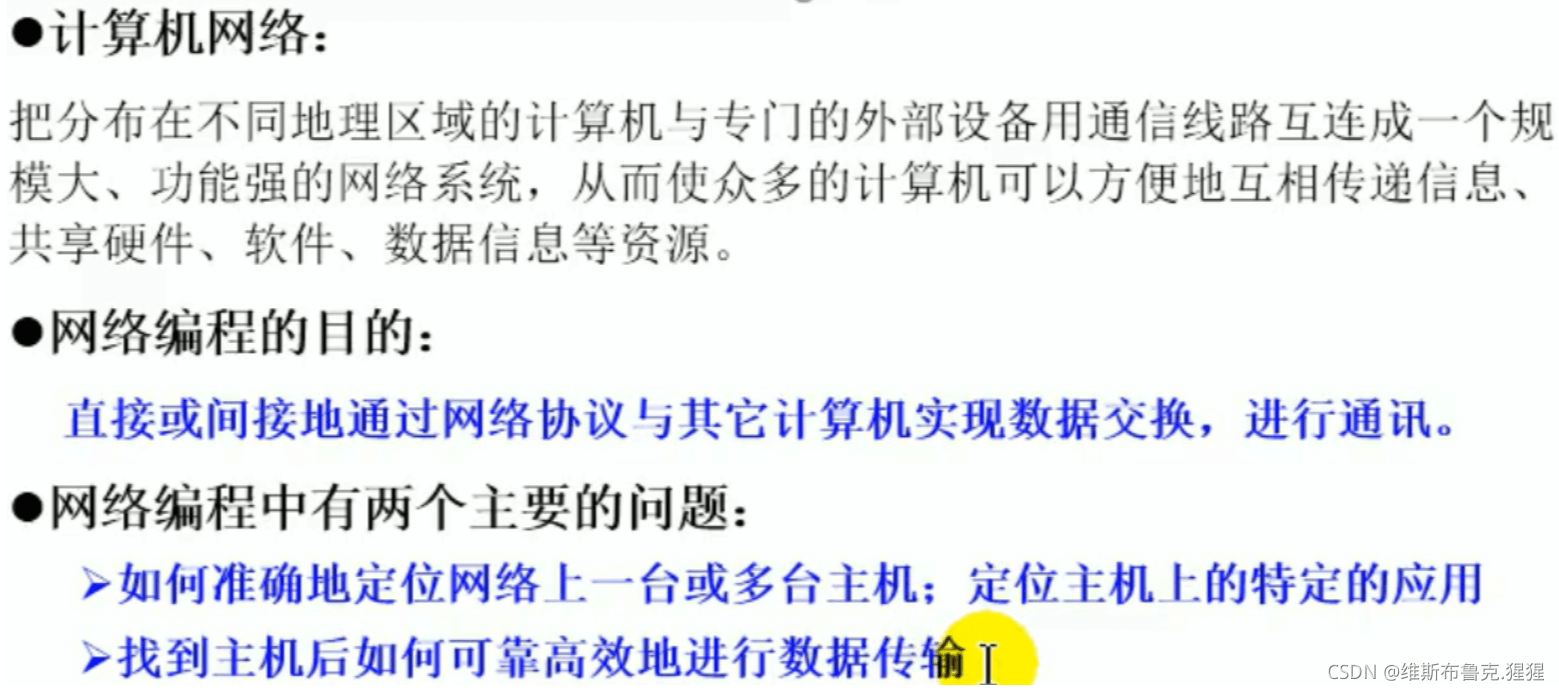

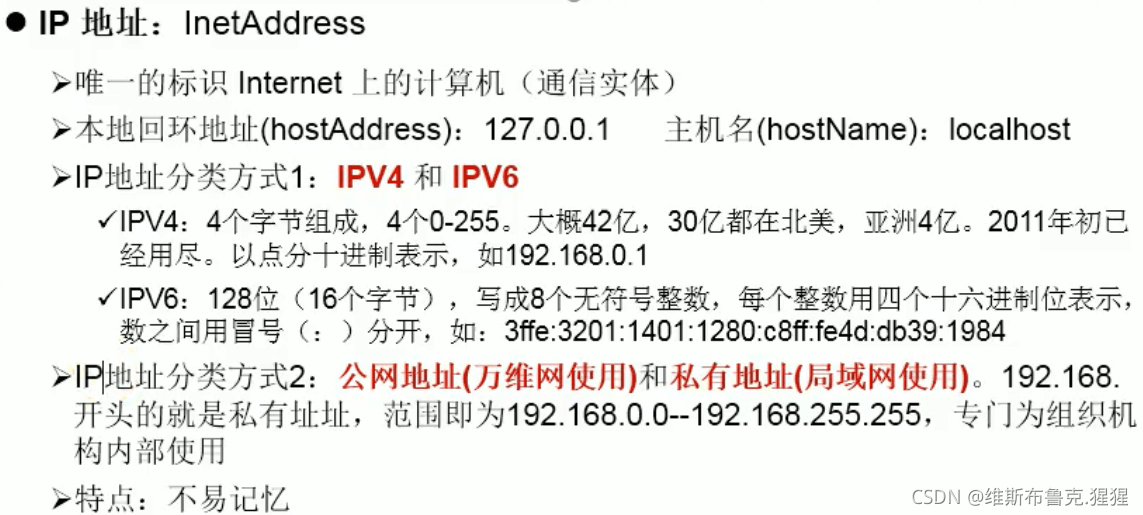
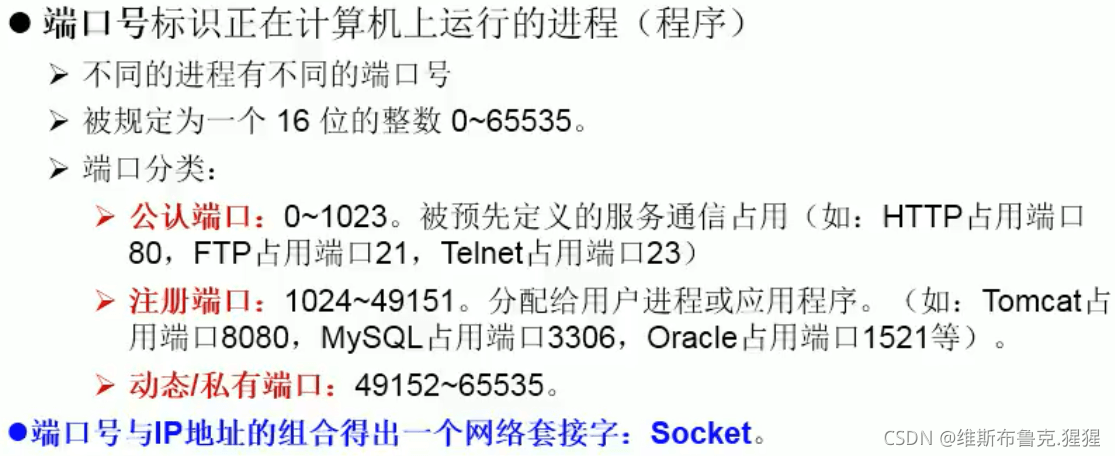
二、网络协议
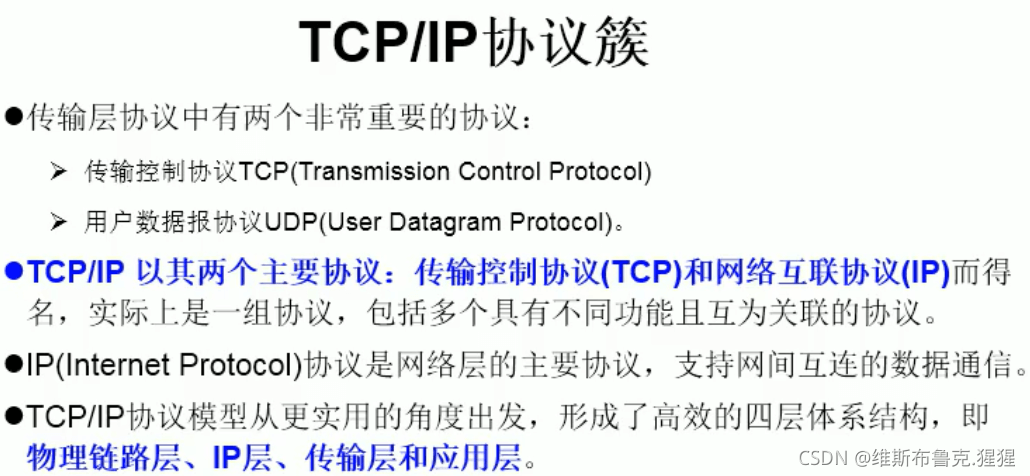


实现TCP的网络编程
例子1:客户端发送信息给服务端,服务端将数据显示在控制台上
public class TCPTest1 {
//客户端
@Test
public void client() {
Socket socket = null;
OutputStream os = null;
try {
//1.创建Socket对象,指明服务器端的ip和端口号
InetAddress inet = InetAddress.getByName("127.0.0.1");
socket = new Socket(inet, 8899);
//2.获取一个输出流,用于输出数据
os = socket.getOutputStream();
//3.写出数据的操作
os.write("你好,我是客户端mm".getBytes());
} catch (IOException e) {
e.printStackTrace();
} finally {
//4.资源的关闭
if(os != null){
try {
os.close();
} catch (IOException e) {
e.printStackTrace();
}
}
if(socket != null){
try {
socket.close();
} catch (IOException e) {
e.printStackTrace();
}
}
}
}
//服务端
@Test
public void server(){
ServerSocket ss = null;
Socket socket = null;
InputStream is = null;
ByteArrayOutputStream baos = null;
try {
//1.创建服务器的ServerSocket,指明自己的端口号
ss = new ServerSocket(8899);
//2.调用accept()表示接收来自于客户端的socket
socket = ss.accept();
//3.获取输入流
is = socket.getInputStream();
//不建议这样写,可能会有乱码
// byte[] buffer = new byte[1024];
// int len;
// while((len = is.read(buffer)) != -1){
// String str = new String(buffer,0,len);
// System.out.println(str);
// }
//4.读取输入流中的数据
baos = new ByteArrayOutputStream();
byte[] buffer = new byte[5];
int len;
while((len = is.read(buffer)) != -1){
baos.write(buffer,0,len);
}
System.out.println(baos.toString());
} catch (IOException e) {
e.printStackTrace();
} finally {
//5.关闭资源
if(baos != null){
try {
baos.close();
} catch (IOException e) {
e.printStackTrace();
}
}
if(is != null){
try {
is.close();
} catch (IOException e) {
e.printStackTrace();
}
}
if(socket != null){
try {
socket.close();
} catch (IOException e) {
e.printStackTrace();
}
}
if(ss != null){
try {
ss.close();
} catch (IOException e) {
e.printStackTrace();
}
}
}
}
}
实现TCP的网络编程
例题2:客户端发送文件给服务端,服务端将文件保存在本地。
public class TCPTest2 {
//这里异常处理的方式应该使用try-catch-finally
@Test
public void client() throws IOException {
Socket socket = new Socket(InetAddress.getByName("127.0.0.1"), 9090);
OutputStream os = socket.getOutputStream();
FileInputStream fis = new FileInputStream(new File("beauty.jpg"));
byte[] buffer = new byte[1024];
int len;
while((len = fis.read(buffer)) != -1){
os.write(buffer,0,len);
}
fis.close();
os.close();
socket.close();
}
//这里异常处理的方式应该使用try-catch-finally
@Test
public void server() throws IOException {
ServerSocket ss = new ServerSocket(9090);
Socket socket = ss.accept();
InputStream is = socket.getInputStream();
FileOutputStream fos = new FileOutputStream(new File("beauty1.jpg"));
byte[] buffer = new byte[1024];
int len;
while((len = is.read(buffer)) != -1){
fos.write(buffer,0,len);
}
fos.close();
is.close();
socket.close();
ss.close();
}
}
实现TCP的网络编程
例题3:从客户端发送文件给服务端,服务端保存到本地,并返回"发送成功"给客户端。并关闭相应的连接
public class TCPTest3 {
@Test
public void client() throws IOException {
Socket socket = new Socket(InetAddress.getByName("127.0.0.1"), 9090);
OutputStream os = socket.getOutputStream();
FileInputStream fis = new FileInputStream(new File("beauty.jpg"));
byte[] buffer = new byte[1024];
int len;
while((len = fis.read(buffer)) != -1){
os.write(buffer,0,len);
}
//服务区端给予客户端反馈
OutputStream os1 = socket.getOutputStream();
os.write("你好,美女,照片我以收到,非常漂亮!".getBytes());
fis.close();
os.close();
socket.close();
os1.close();
}
//这里异常处理的方式应该使用try-catch-finally
@Test
public void server() throws IOException {
ServerSocket ss = new ServerSocket(9090);
Socket socket = ss.accept();
InputStream is = socket.getInputStream();
FileOutputStream fos = new FileOutputStream(new File("beauty2.jpg"));
byte[] buffer = new byte[1024];
int len;
while((len = is.read(buffer)) != -1){
fos.write(buffer,0,len);
}
//接受来自于服务器端的数据,并显示到控制台上
InputStream is1 = socket.getInputStream();
ByteArrayOutputStream baos = new ByteArrayOutputStream();
byte[] bufferr = new byte[20];
int len1;
while((len1 = is1.read(buffer)) != -1){
baos.write(buffer,0,len1);
}
System.out.println(baos.toString());
fos.close();
is.close();
socket.close();
ss.close();
baos.close();
}
}

UDP协议的网络编程
public class UDPTest {
@Test
public void sender() throws IOException {
DatagramSocket socket = new DatagramSocket();
String str = "我是UDP方式发送的导弹";
byte[] data = str.getBytes();
InetAddress inet = InetAddress.getLocalHost();
DatagramPacket packet = new DatagramPacket(data,0,data.length,inet,9090);
socket.send(packet);
socket.close();
}
@Test
public void receiver() throws IOException {
DatagramSocket socket = new DatagramSocket(9090);
byte[] buffer = new byte[100];
DatagramPacket packet = new DatagramPacket(buffer, 0, buffer.length);
socket.receive(packet);
System.out.println(new String(packet.getData(),0,packet.getLength()));
}

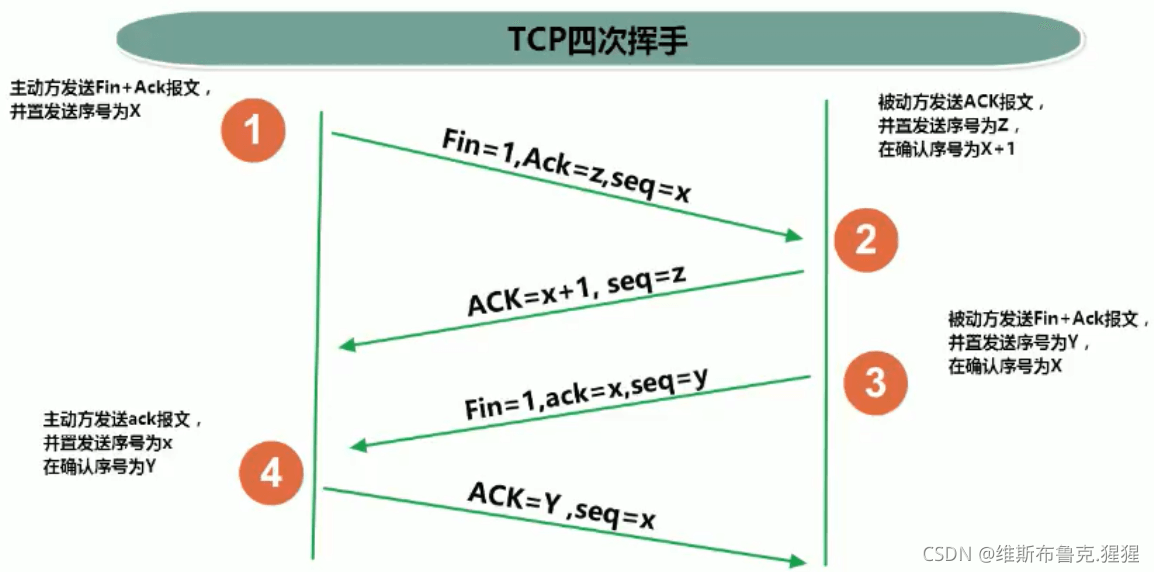
URL类
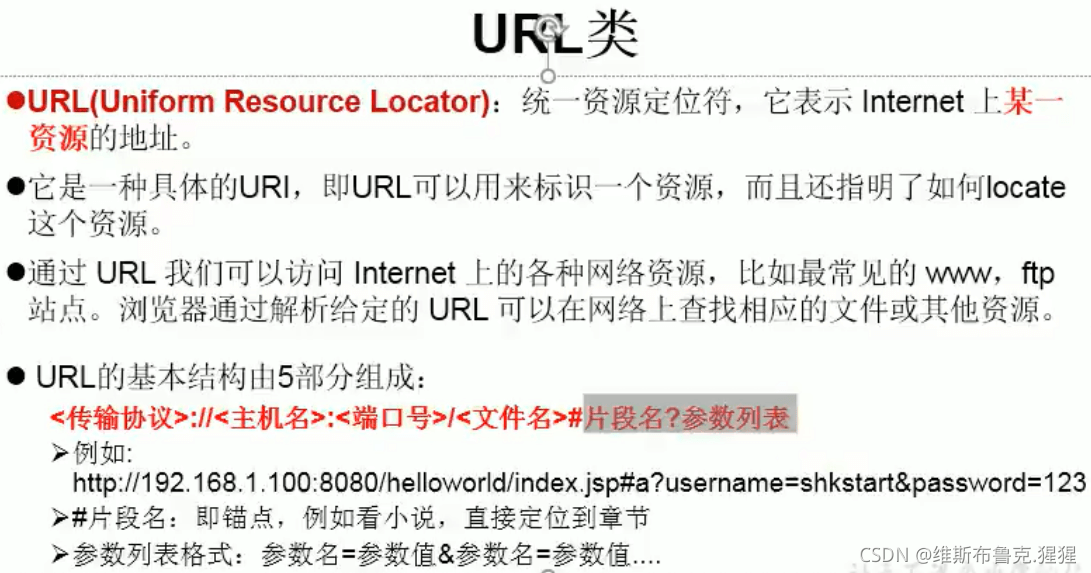
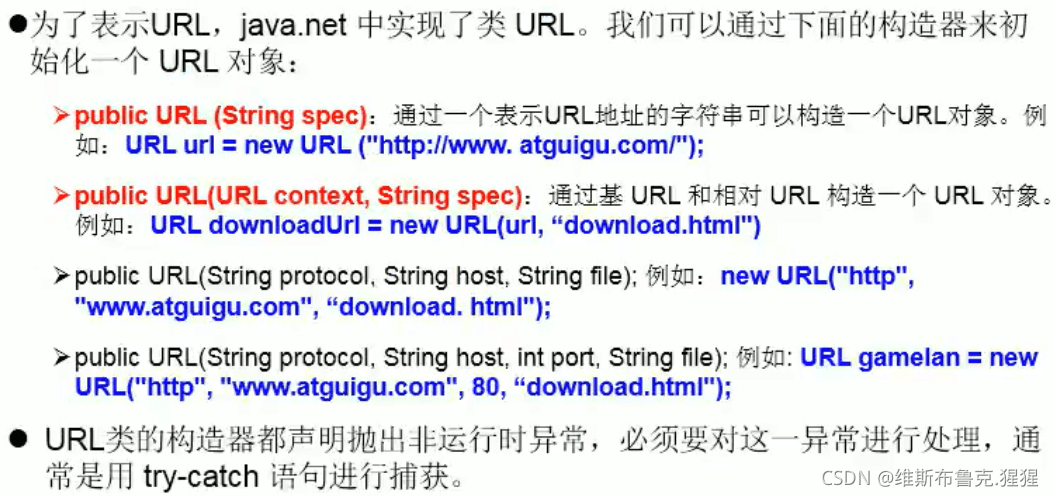
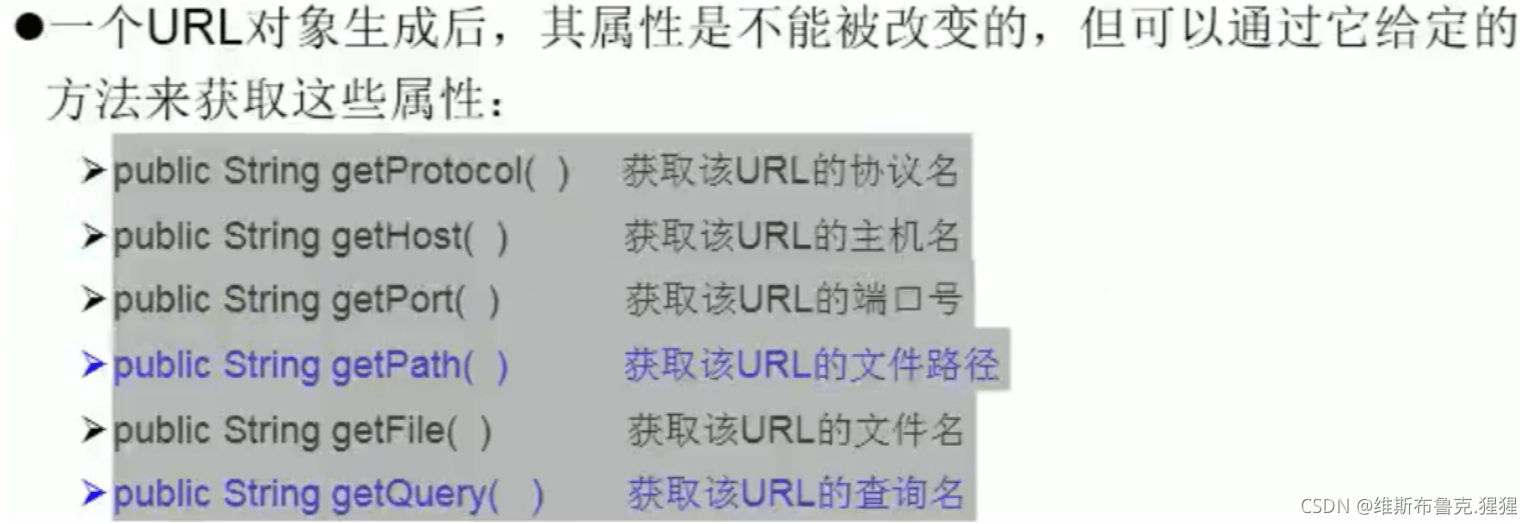
URL网络编程
1.URL:统一资源定位符,对应着互联网的某一资源地址
2.格式:
http://localhost:8080/examples/beauty.jpg?username=Tom
协议 主机名 端口号 资源地址 参数列表
public class URLTest {
public static void main(String[] args) {
try {
URL url = new URL("http://localhost:8080/examples/beauty.jpg?username=Tom");
// public String getProtocol() 获取该URL的协议名
System.out.println(url.getProtocol());// http
// public String getHost() 获取该URL的主机名
System.out.println(url.getHost());//localhost
// public String getPort() 获取该URL的端口号
System.out.println(url.getPort());// 8080
// public String getPath() 获取该URL的文件路径
System.out.println(url.getPath());//examples/beauty.jpg
// public String getFile() 获取该URL的文件名
System.out.println(url.getFile());//examples/beauty.jpg?username=Tom
// public String getQuery() 获取该URL的查询名
System.out.println(url.getQuery());//username=Tom
} catch (MalformedURLException e) {
e.printStackTrace();
}
}
}
以上就是Java网络编程之入门篇的详细内容,更多关于Java网络编程的资料请关注我们其它相关文章!
赞 (0)

